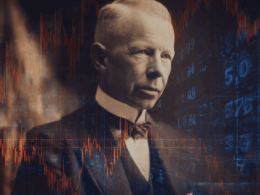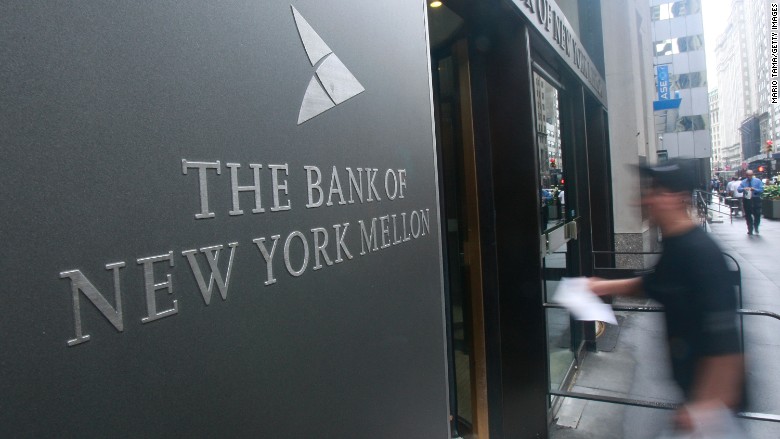Shad Rowe?!
by Jeffrey Saut, Chief Investment Strategist, Raymond James
April 4, 2011
“An old rancher in the Texas Hill Country kept two big hogs in a pen at the top of small hill near his house. The animals were nasty – smelled bad – but the breeze higher up kept the smell away from the house. Every day, morning and late afternoon, the old rancher would walk his hogs down to the creek at the bottom of the hill and water them. The rancher’s grown son observed this ritual for years and finally spoke up. ‘Dad,’ he said, ‘If you would drill a water well up near the pen, it would save a lot of time.’ The old rancher looked at his son with an expression that said, ‘You never seem to get it,’ and asked, testily, ‘What the hell is time to a hog?’ There are a number of morals to this story. The moral from Jim’s perspective, I suspect, is ‘This is not the Texas Hill Country and you don’t have all day, so get to your point’.”
... Frederick E. “Shad” Rowe, General Partner of Greenbrier Partners, Ltd.
So said Frederick “Shad” Rowe as he began his address to a packed room at Jim Grant’s London conference last month. Since the 1980s I have read articles by Shad in Forbes, Fortune, Barron’s, etc. and always found them insightful. Moreover, I have often used his sagacious comments in these missives to emphasize those gleanings in an attempt to help investors profit from them. This morning is no exception.
Shad went on to opine why he is a steadfast bull on the American stock market. Said bullishness does not stem from his nature, for a couple of decades ago he enjoyed great success as a “short seller.” Nope, Shad’s bullishness is based on the belief that innovation is thriving in America. He used Google as an example. To wit:
“In the United States, two graduate students have managed to develop a product that led to the creation of the most scalable business model in history. Google is 12 years old and is already the 39th most profitable company in the world. Google’s core product is useful to corporations and consumers both, but has also become the lifeblood of thousands of small and medium-sized businesses. Beyond generating close to $30 billion in revenue this year, Google’s success has created an ecosystem that employs thousands of people around the world and Google alumni populate the upper echelon of the next batch of revolutionary technology companies. Facebook is one of many other examples.”
I would add Groupon as such an example, which was a “startup” three years ago and now employs more than 5,000 people. To be sure, the country is going through what the economist Joseph Schumpeter described as “creative destruction” whereby the dying industries, like the building of McMansions or giant SUVs, fade away but are replaced by new, growth industries. As scribed in Wikipedia:
“Schumpeter identified innovation as the critical dimension of economic change. He argued that economic change revolves around innovation, entrepreneurial activities and market power and sought to prove that innovation-originated market power could provide better results than the invisible hand and price competition.”
Granted, this creative destruction process takes time, and does not occur without “hard spots” along the way, but as Shad notes:
The same factors that have served the U.S. well in the past are the same factors I believe will lead us to future prosperity:
1) The United States is the home of the entrepreneur.
2) The U.S. is the most open/flexible society the world has ever seen.
3) The brightest minds from around the world dream of coming to the U.S.
4) English is the universal language.
5) Americanization remains a powerful and growing – though resented – economic and social trend throughout the world. (To quote the advertising/marketing giant WPP Group’s CEO, Sir Martin Sorrell, “Globalization is a misnomer. The better word is Americanization.”)
I revisit Shad’s cogent comments this morning not just because Greenbrier Partners has produced above market investment returns since its inception in 1985, but because during my Texas speaking tour last week I had the pleasure of spending time with him. Following our strategizing, Shad borrowed a phrase from another acquaintance of mine, Adam Smith (aka Gerry Goodman) author of the classic book The Money Game – “What do we do about it on Monday morning?” Shad goes on to counsel:
“Subscribing as I do to the Charlie Munger dictum that a great business at a fair price is superior to a fair business at a great price, we buy shares in what we believe are ‘Great Companies.’ Since the stock market currently makes little distinction in valuation between fair and great companies, the normal dilemma – Do I pay up for quality? – does not exist. My plan is to proceed as follows:”
“First, I define what makes a company ‘Great.’
1) A great company brings value to its customers, its suppliers, its shareholders, and a culture of fulfillment to its employees.
2) As a customer, you can’t beat it and what the company sells is good for its customers.
3) A great business generates a lot of free cash for reinvestment and is able to reinvest at high rates of return.
4) The chief executive does not ‘alternate between smart and dumb.’ He/She is smart all the time and demonstrates respect for shareholders, first because it is right and second because the CEO is a significant owner.
5) The socio/economic wind is at the back of the company.
6) Ideally, there is a ‘moat’ around the business that Buffett and Munger define as a sustainable competitive advantage. ‘Moats’ are problematic in practice because the world changes so fast that most of them are not sustainable. My concept of a ‘moat’ is superior management with superior brains fixated on adjusting to and capitalizing on rapid change.”
While these are not Shad’s selections, some companies from the Raymond James research universe that appear to “foot” with Shad’s metrics, all of which are rated Strong Buy, are: IESI-BFC Ltd. (BIN/$25.81); Pão de Açúcar (CBD/$43.12); IBERIABANK Corporation (IBKC/$60.39); and Kansas City Southern (KSU/$54.47), to name just a few.
The call for this week: Last week we saw an improvement in private sector payrolls, the ISM manufacturing report was solid, pending home sales were better, and corporate layoff intentions fell. The result left all the indices we follow higher on the week. The star, however, was the D-J Transportation Average (TRAN/5370.47), which leaped 3.13% and in the process traded above its February 17, 2011 high (5298.10) to a new reaction high. Unfortunately, the D-J Industrial (INDU/12376.72) has not confirmed the Trannies with a like move above its February reaction high of 12391.25. If the Industrials do confirm on the upside it would be the third Dow Theory “buy signal” in the past 10 months. Potentially telegraphing a move higher are the S&P SmallCap 600, and the S&P MidCap 400, indices that have now recorded new all-time highs; and, the Russell 2000 is close to doing the same. To us, the S&P 500 (SPX/1332.41) is poised to go higher. The only question is will we get a one- to two-week pullback/consolidation to alleviate the overbought condition (see chart on next page) before we head higher?

Click here to enlarge
Copyright © Raymond James













